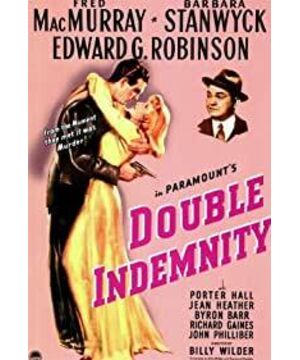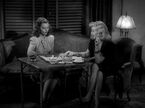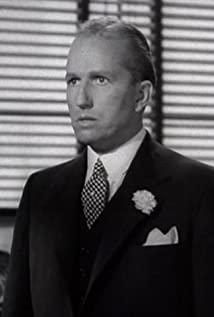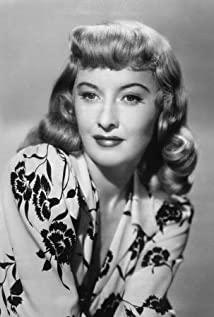Basic story: [Kill husband and cheat insurance] (normal route: wife plans to kill husband and cheat insurance - buy insurance for husband - kill husband according to plan as an accident - insurance company investigation - wife covers up, both sides attack and defense - investigation finds out the truth, wife subdues law)
➕Core idea: Insurance salesman cheating insurance (in this way, the perpetrator can observe and influence the investigation process from the inside, and the visibility and interest of the whole story are greatly enhanced)
➕Love: The male protagonist participated in the crime because he fell in love with the female protagonist (in reality, the case may be more for pure interests, but it is difficult to impress the audience with a story that does not touch emotions), the female protagonist was killed by the male protagonist because he fell in love with the male protagonist Die (who doesn't like watching love and kill)
➕Friendship: The investigator responsible for reviewing the compensation happens to be a friend of the male protagonist (because of trust, the shrewd and dedicated investigator male 2 has been taking detours)
➕Inner conflict: The male protagonist is still a kind person to some extent
➕ Reversal: The heroine was lonely and weak at the beginning. She wanted to divorce but was rejected by her strong husband, and she had no choice but to kill her husband. Later, it was discovered that she was a cold-blooded poisonous woman who had been planning for a long time.
➕Climax scene: The climax of the normal route should appear at the moment when the truth is investigated, but this film reduces the importance of the investigation scene and makes the male protagonist turn himself in. The director chose to fix the perspective on the male protagonist to show his behavior, thoughts and emotional changes throughout the incident. Therefore, the climax scene was placed in the confrontation with the female protagonist after the male protagonist decided to withdraw from the insurance fraud plan. Shooting is very interesting in killing scenes.
➕Humanity performance: The male protagonist committed the crime because he fell in love with the female protagonist, but finally killed the female protagonist himself
➕ Unique narrative method: The whole story is presented in the way that the male protagonist tells the male second (flashback), and the male protagonist confesses the crime at the beginning, revealing the biggest suspense of the crime story (who is the murderer)
The complexity of the protagonist: there are multiple conflicts in the male protagonist
External: Profession vs Malpractice - Being an insurance company employee and cheating
Friendship vs cheating - cheating friends who trust and appreciate themselves
Love vs Hate - After feeling the threat of death, the love for the heroine gradually deteriorates, and finally draws a gun
Heart: Kind vs Evil - Seeing the deceased's daughter feel guilty and finally giving up on her plan to blame others and confessing her crime to a friend
Summary: Don't look down on the basic story. The basic story can ensure that the film has a stable and solid structure and ensure that the audience can easily understand the main context of the story. Add a unique idea (change a core component in the basic route), and after enriching and perfecting it, it is your own story.
View more about Double Indemnity reviews











